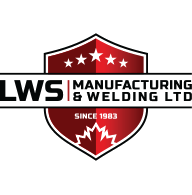Metal Finishing Techniques
At LWS Manufacturing & Welding, we take great pride in the quality and durability of our metal fabrication services. One key aspect that ensures the longevity and aesthetic appeal of our metal products is the precise application of metal finishing techniques. To help you make an informed decision for your project, our expert team has put together some information about the different metal finishing techniques and how they enhance the properties and appearance of fabricated metal products.
Learn all about the importance of quality control in metal fabrication.
1. Grinding and Polishing
Grinding and polishing are fundamental metal finishing techniques used to smooth out surfaces and enhance the appearance of metal products. At LWS Manufacturing & Welding, our skilled fabricators use high-quality grinding and polishing tools to achieve a flawless finish on a variety of metals, including steel, aluminum, and stainless steel. Grinding eliminates surface imperfections, while polishing provides a shiny and attractive finish.
2. Sandblasting
Sandblasting, also known as abrasive blasting, is a highly effective technique for cleaning and preparing metal surfaces. By propelling fine abrasive particles against the surface at high speeds, sandblasting can be used to remove rust, paint, and other contaminants, leaving behind a clean and textured surface. This process is crucial for improving the adhesion of subsequent coatings.
What are the benefits of choosing steel for your project?
3. Powder Coating
Powder coating is a popular finishing technique that provides a durable and attractive finish. Unlike traditional liquid paint, powder coating involves applying a dry powder to the metal surface, which is then cured under heat to form a hard, durable layer. This technique offers excellent resistance to corrosion, chipping, and scratching, making it an ideal choice for various applications.
4. Anodizing
Anodizing is a specialized technique used primarily for aluminum products. This electrochemical process enhances the natural oxide layer of the aluminum, providing increased corrosion resistance and improved surface hardness. Additionally, anodizing offers the flexibility to add colour to the metal surface without compromising its durability.
5. Electroplating
Electroplating involves coating a metal surface with a thin layer of another metal, such as chromium, nickel, or zinc, through an electrochemical process. This technique enhances the appearance, corrosion resistance, and wear resistance of the metal product.
6. Passivation
Passivation is a finishing technique used to enhance the corrosion resistance of stainless steel by removing surface contaminants and promoting the formation of a protective oxide layer. This process is crucial for applications where stainless steel will be exposed to harsh environmental conditions.
At LWS Manufacturing & Welding, we are committed to delivering high-quality finishes that meet the specific needs of our clients. Whether you require improved corrosion resistance or a stunning visual appeal, our expert team is here to help. Contact us today at 604-854-1277 to learn more about our metal finishing services and how we can support your next project.




